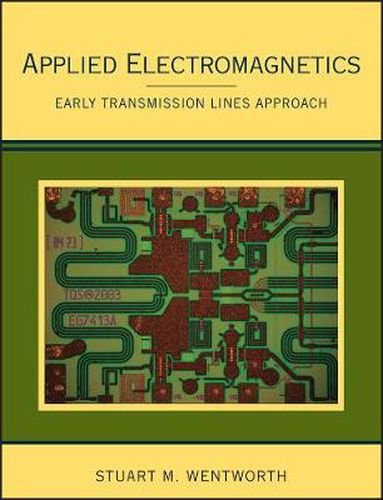Readings Newsletter
Become a Readings Member to make your shopping experience even easier.
Sign in or sign up for free!
You’re not far away from qualifying for FREE standard shipping within Australia
You’ve qualified for FREE standard shipping within Australia
The cart is loading…






Every new copy of Stuart Wentworth’s Applied Electromagnetics comes with a registration code which allows access to the Student’s Book Companion Site. On the BCS, the student will find: detailed Solutions to Odd-Numbered Problems in the text; detailed solutions to all Drill Problems from the text MATLAB code for all the MATLAB examples in the text; and additional MATLAB demonstrations with code. This includes a Transmission Lines simulator created by the author and weblinks to a vast array of resources for the engineering student. About the photo: Passive RFID systems, consisting of readers and tags, are expected to replace bar codes as the primary means of identifiction, inventory and billing of everyday items. The tags typically consist of an RFID chip placed on a flexible film containing a planar antenna. The antenna captures radiation from the reader’s signal to power the tag electronics, which then responds to the reader’s query. The PENI Tag (Product Emitting Numbering Identification Tag) shown, developed by the University of Pittsburgh in a team led by Professor Marlin H. Mickle, integrates the antenna with the rest of the tag electronics. RFID systems involve many electomagnetics concepts, including antennas, radiation, transmission lines, and microwave circuit components.
$9.00 standard shipping within Australia
FREE standard shipping within Australia for orders over $100.00
Express & International shipping calculated at checkout
Every new copy of Stuart Wentworth’s Applied Electromagnetics comes with a registration code which allows access to the Student’s Book Companion Site. On the BCS, the student will find: detailed Solutions to Odd-Numbered Problems in the text; detailed solutions to all Drill Problems from the text MATLAB code for all the MATLAB examples in the text; and additional MATLAB demonstrations with code. This includes a Transmission Lines simulator created by the author and weblinks to a vast array of resources for the engineering student. About the photo: Passive RFID systems, consisting of readers and tags, are expected to replace bar codes as the primary means of identifiction, inventory and billing of everyday items. The tags typically consist of an RFID chip placed on a flexible film containing a planar antenna. The antenna captures radiation from the reader’s signal to power the tag electronics, which then responds to the reader’s query. The PENI Tag (Product Emitting Numbering Identification Tag) shown, developed by the University of Pittsburgh in a team led by Professor Marlin H. Mickle, integrates the antenna with the rest of the tag electronics. RFID systems involve many electomagnetics concepts, including antennas, radiation, transmission lines, and microwave circuit components.